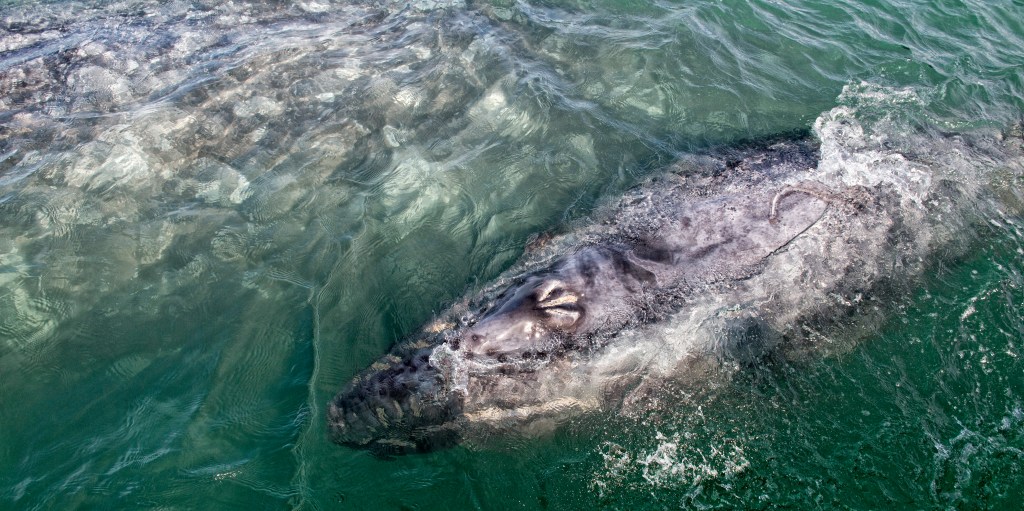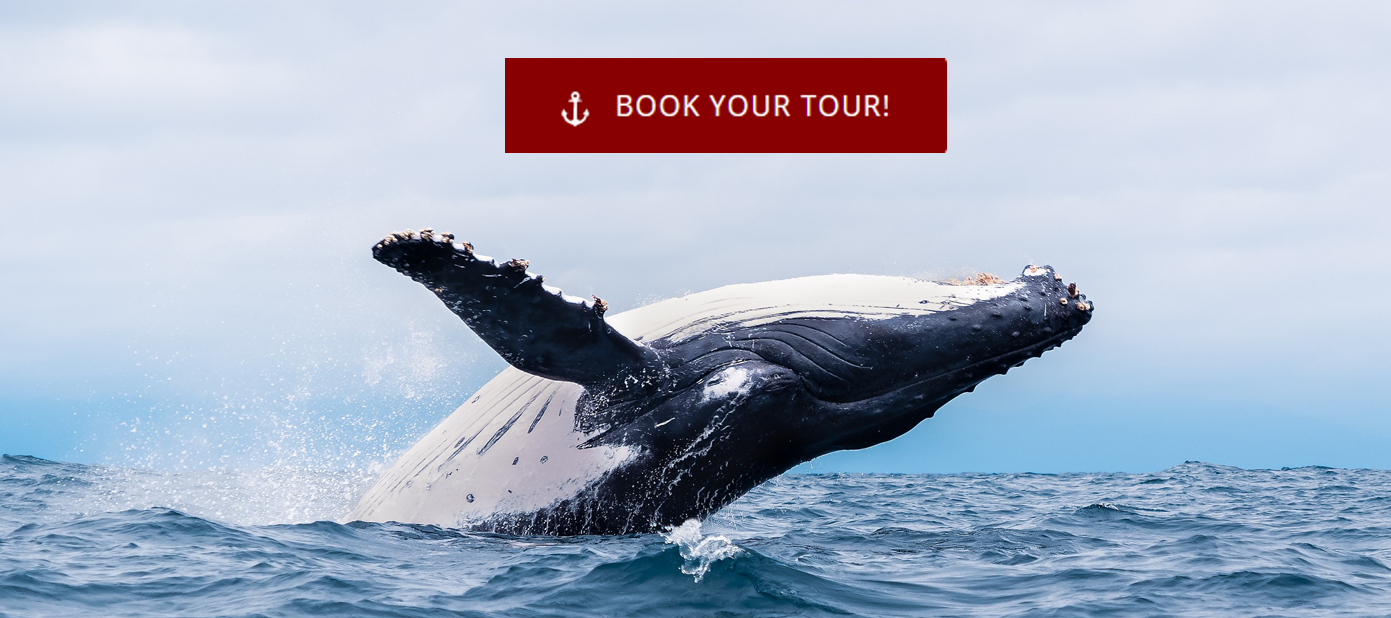List of Gray Whale Behavioral Patterns

Gray whales live only in the Pacific Ocean, with a population of about 26,000. The largest Gray whale group is the Eastern North Pacific stock. They spend the summers north of Alaska in the Bering and Chukchi Seas and travel to the warm lagoons of Baja California, Mexico in the winter months.
Gray Whale Migration Patterns
Gray whales are known to have one of the longest migrations of any land or sea mammal, at a total of 12,000 miles every year. They begin their journey in their summer home of Alaska where the waters are rich in bottom-dwelling organisms, the Gray whale’s favorite food. When the Autumn months occur, sunlight diminishes in Alaska along with food sources so the Gray whale abandons the icy waters. From there, the whales travel to Mexico where Gray whale mating and birthing occurs in the lagoons of Baja California. They complete their migration at a turtle like pace, taking 55 days to travel in each direction. Gray whales spend about half their lives migrating while swimming at this rate. Their slow travel rate begs the question, how fast can a Gray whale swim? They can only swim up to 6 mph, and at a minimum of 3 mph with their average migration speed coming in at 5 mph.

When the whales finally reach their southern destination and are raising the young, the Mexican government cautiously manages human access to these lagoons until the calves are strong enough to migrate back to Alaska. Since gray whales migrate relatively close to shore at a slow rate, whale watching opportunities are very accessible. In December through February, San Diego stands as an excellent destination for top of the line whale views as the majestic marine life migrates its way towards the southern region. The peak season continues as Gray whales return from the Baja California lagoons in the months of March, April, and May and make their way back up to Alaska. Since there are a variety of age groups, we see whales all winter long. For instance, new mothers are the last to leave Baja as they have to wait for their newborn calves to be strong enough to make the migration up to Alaska. There are many chances to view Gray whales from coastal cliffs or from whale watching tours that take you out to sea, to get a close-up look at the massive whales.
Spotting Gray Whaler
Often, gray whales are spotted emerging from the ocean’s surface at high speed. Researchers have speculated that they complete this fast act as a way to remove parasites stuck on the body of the whale. Another active behavior they perform is only lifting their heads out of the water, tilting it back seemingly sunbathing or looking up at the sky.

Gray Whale Behavior
Due to their seemingly gentle behavior some may wonder, are Gray whales aggressive? For the most part they have evolved to become relatively friendly creatures, undisturbed by kayakers and other boats. Commonly, they become more friendly as the birthing season progresses, most likely because the calves become more curious and the mothers have less control over their young as they continue to grow and explore. However, Gray whales weren’t always thought to be gentle giants. Whale hunters used to dub the Gray whale as a “devilfish” because they would repeatedly attack whaling boats, especially when their calves were present. They are also know to aggressively charge pods of Orca on occasion.
Generally, the Gray whale exists in small groups but sometimes the mammals come together forming large pods. Gray whales do not stay with the same group throughout their lifespan, though. Alternatively, the whales establish loose bonds with the others and easily move on to other groups when they desire.
Gray whales are apart of the Baleen whale family, meaning they have a unique way of consuming their food sources. Some Baleen whales suck plankton and krill from the water column. Differentiating from these whales, Grays swim to the bottom of the ocean, grab a mouthful of sand, and push it through their baleen to trap small organisms like shrimp and amphipods. This act attracts them closer to shore compared to other baleen whales. Additionally, muddy patches of water are often seen in places where gray whales are feeding. Gray whales fill up on food at their Alaskan grounds before completing their migration journey eating minimal to zero food along the way.
